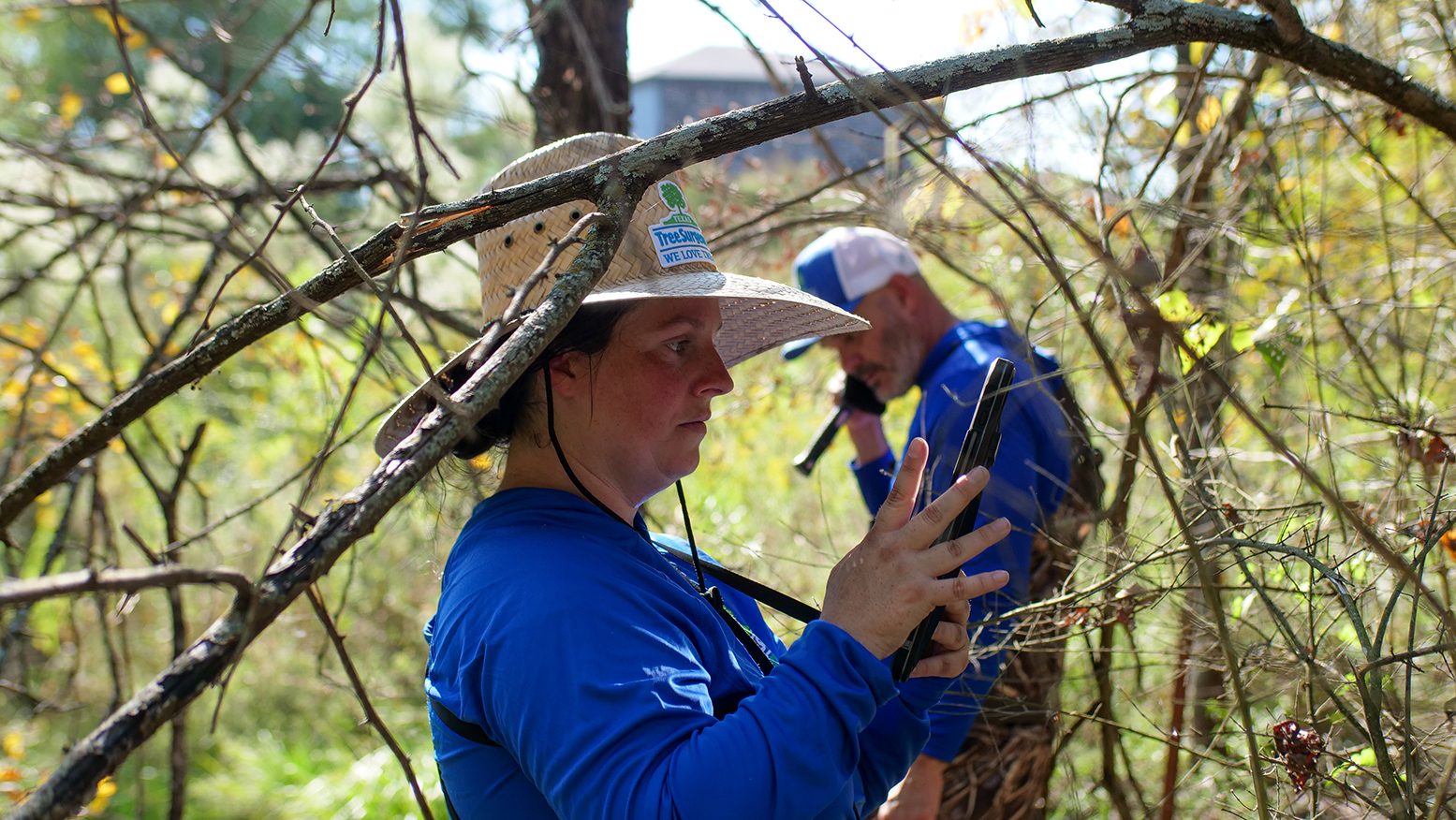What’s Wrong With All These Trees?

Just as with extreme winter weather, intense summer heat and lack of rainfall can create stressful and dangerous situations for trees. The drought conditions we endured for the summer of 2022 dried out area lakes and rivers and dramatically reduced the available moisture in the soil.
According to the Texas A&M Forest Service, over 3 million trees died as a result of the widespread drought of 2011. While some of the data shows that the 2022 drought was less severe than 2011, many areas of the state have actually had less rainfall and more 100-degree days than in the comparable period 11 years ago. Additionally, many trees affected in the 2022 drought were still suffering the effects of the freezing weather in 2021.
How Does Drought Affect Trees?
The effects of drought cannot be overstated.
-
In addition to potentially facing long periods and high temperatures, trees in drought areas:
-
Can lose their ability to take up nutrients from the soil
-
When ground temperatures rise as high as they did this summer, the soil dries out and the fine, nutrient-absorbing roots of a tree found close to the surface die.
-
-
Have to rely on limited energy stores instead of outside nutrition
-
This leaves energy stores depleted, leading to further decline after their dormant season.
-
-
Are unable to immediately take up much-needed moisture once it returns
-
Moisture-absorbing riot structures take time to regrow in dehydrated soil.
-
-
Find their microenvironment greatly altered
-
Beneficial microorganisms, just like fine tree roots, cannot live in dried out, hard ground.
-
-
What Can You Do to Help Your Trees Right Now?
-
-
Even though we have had some rain recently, it is not enough to help trees come back from extended drought. Proper watering now will make a big difference!
-
-
Apply appropriate soil amendments and compost/natural fertilizers
-
Nutrient-rich material, such as compost or soil amendments, bring much-needed micronutrients to bolster soil revitalization.
-
As a response to the drought stress, Texas Tree Surgeons will be using a nutrient-rich fertilizer mix that contains beneficial rhizosphere bacteria, seaweed and yucca extracts, urea and humic acids, as well as fish meal, kelp meal, worm tea, and sea water extracts for fall 2022 applications. This blend of natural micronutrient sources will benefit not only the trees, but the soil ecosystem, and allow beneficial microorganisms to thrive.
-
-
Use mulch in the trees’ root zones to help regulate soil temperature and moisture content
-
Proper mulching leads to better soil, as the mulch decomposes into nutritious organic matter.
-
-
For stressed trees, only remove dead or broken areas and do light maintenance trimming
-
Wait until the trees have had another growing season before considering major work.
-
Drought can lead to more dry and dead limbs; be sure to remove those before they come down in fall and winter storms.
-
-
If you need to replace trees or other landscaping that didn’t make it, fall and winter are the best times to plant
-
Use native species to ensure hardiness against future droughts.
-
Need some ideas? Check out our list of great ornamentals, as well as information about native grasses from our friends at Native Gardeners.
-
What Should Be Avoided After a Drought?
-
ABSOLUTELY DO NOT USE HIGH-NITROGEN FERTILIZER OR “WEED AND FEED” PRODUCTS!
-
Using a high-nitrogen fertilizer can stimulate fast and unsustainable growth that is a waste of the already-taxed energy stores of stressed trees.
-
“Weed and feed” products are formulated to kill woody-stemmed plants (like trees!). Using these chemicals adds a further stressor to the tree’s environment.
-
-
Do not install new sod or artificial turf
-
Putting sod or synthetic turf around a stressed tree will prevent the regrowth of the tree’s fine root systems.
-
-
Do not rely on sprinkler systems or lawn irrigation to water your trees
-
Trees’ water requirements are vastly different from turf grass. Make sure you are watering correctly.
-
-
Do not over- or improperly trim your trees
-
Lion tailing, topping, and removing large sections of canopy are always a bad idea, but improper trimming can lead to a stressed tree dying completely.
-
At Texas Tree Surgeons, we love trees and we love our community! We hope your trees made it through the summer of 2022, but even trees that seem unaffected need particular attention and care in the coming months and years. Proper watering is key, but drought-stressed trees and soil need additional help this fall and in the seasons to come. Our ISA Certified Arborists can assess your trees’ needs and recommend a well-tailored plan of soil amendments and healthy trimming to make your trees thrive all year long. Get in touch today!
Related Blogs
Similar blogs related to this topic


Top 10 Things We'd Tell You as an Arborist if We Weren't Afraid of Hurting Your Feelings
This is a list of tree care worst practices that you, or someone you know may be guilty of. Read the following list at your own risk. You’ve been warned, feelings may get hurt. 1.…
Read more

Avoid These Tree Care Mistakes for a Healthy Landscape
Below is a list of overlooked mistakes that could jeopardize the health of your trees. From missteps in pruning to incorrect watering practices, discover how to give your trees the care they deserve. Red oak…
Read more

Why do Arborists Recommend Soil Sampling in Urban Areas like Dallas?
Soil sampling is a crucial practice in urban areas like Dallas. It helps arborists make informed decisions about your landscape to ensure a healthy urban ecosystem. Our native soils vary widely—from the dense clays of…
Read more
